A screenshot is a picture or image that displays the content of a specific screen region. Like Windows and Mac operating systems, Linux provides built-in support for a screen-capturing tool. Additionally, various third-party applications can also be utilized to take a screenshot.
This article will demonstrate various methods to take screenshots on Linux. The supported content of this guide is as follows:
- Method 1: Using the Built-in Screen Capturing Utility
- Using the “PrtScr” Key
- Using the “Shift+PrtScr” Key
- Using the “Alt+PrtScr” Key
- Method 2: Using Third-Party Tools
- Flameshot
- Kazam
Let’s start the guide with the built-in capturing utility.
Method 1: Using the Built-in Screen Capturing Utility
Most of the Linux distributions are equipped with a default screen capturing utility which can be invoked through various ways. This section enlists the possible methods to launch/start the built-in snipping tool of Linux OS:
Using the “PrintScr” Key
To take a screenshot of the full or specific portion, hit the “PrtScr” button from the keyboard, which will invoke the built-in screenshot tool of the system. It pops a window where the user can select the area for capturing.
Additionally, the user can adjust the position of the selected screen by selecting the region and dragging the mouse pointer.
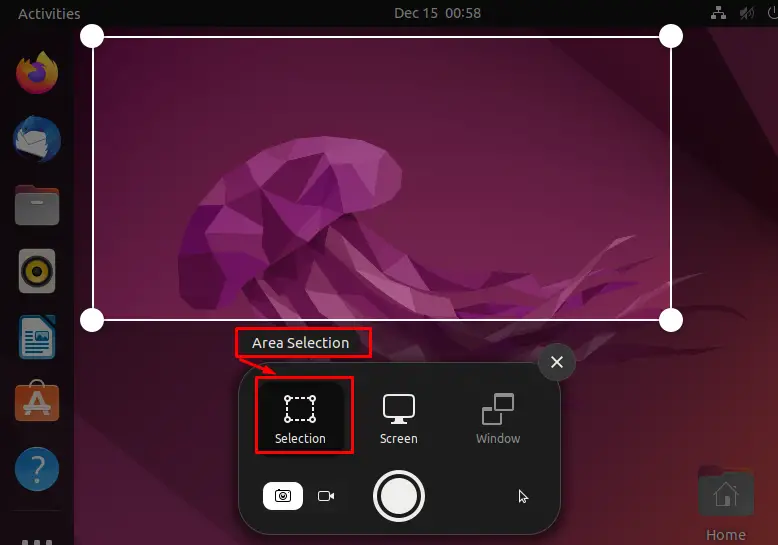
After adjusting the screen, hit the round button to take a screenshot. Additionally, users have the option to display the mouse pointer or not via the “Show Pointer” option:
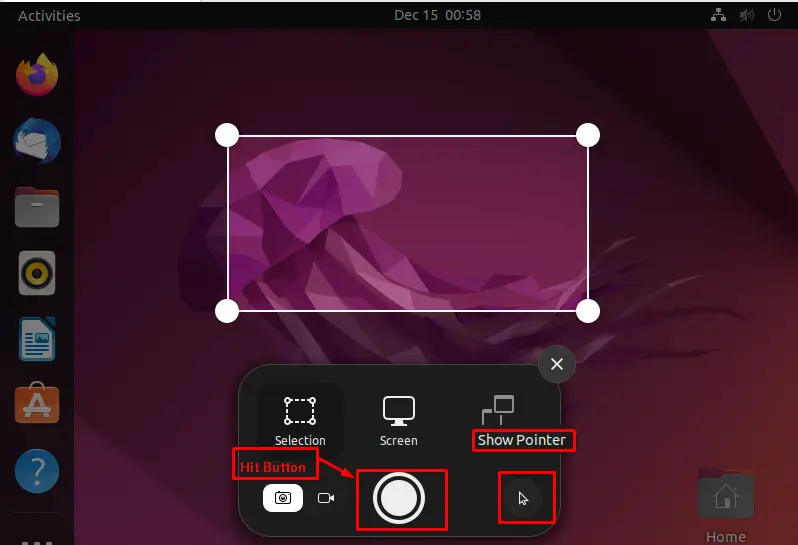
You can verify that the screenshot has been captured and can be located in the “~/Pictures” directory by default:
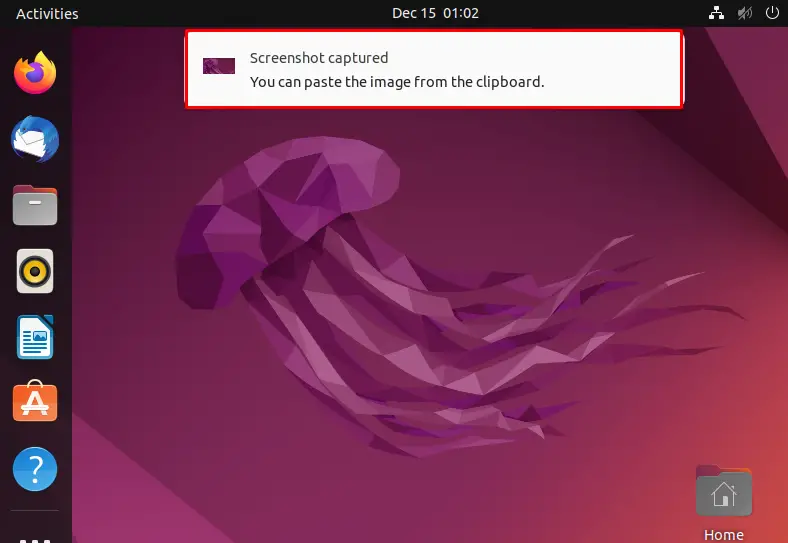
Alternative: Launch the Application Using GUI
Another method can be adapted for capturing the screenshot of a specific or entire screen. To do so, hit the “Show Applications” icon and search out the “screenshot” in the popup window field. It finds the specified application, “Take a Screenshot”, and hits the button for capturing:
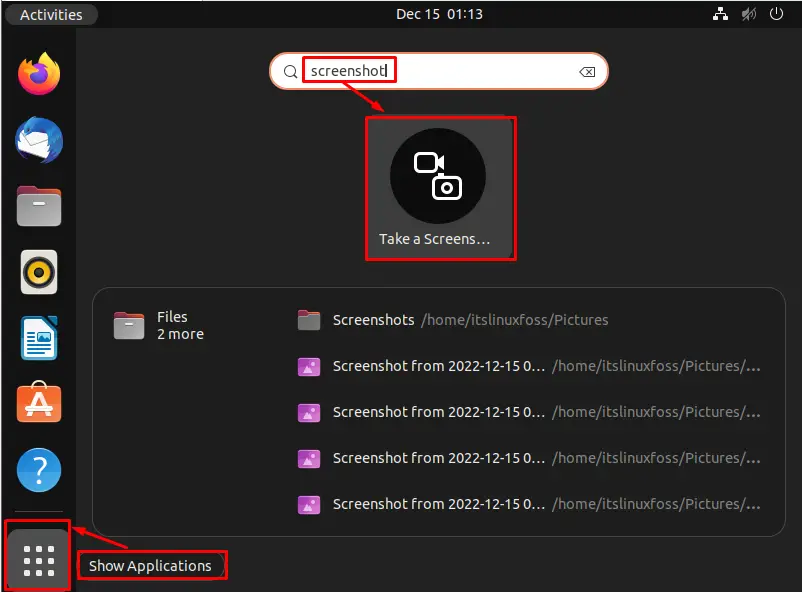
It navigates to the built-in utility of screenshots for capturing the specific or entire screen:
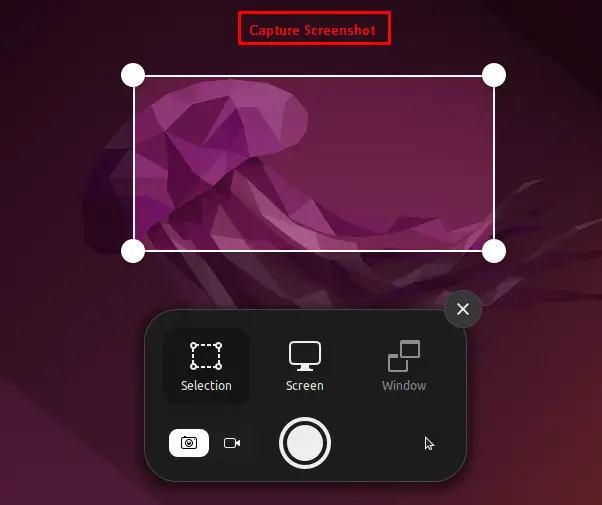
Note: This step is demonstrated on Ubuntu, which is the same for the Linux distributions offering the GUI.
Using the “Shift+PrtScr” Key (Captures the Entire Screen)
The “Shift+PrtScr” key instantly captures the shot of the full screen. By default, the screenshot is saved in the “~/Pictures” directory, while the users can save it at any preferred location:
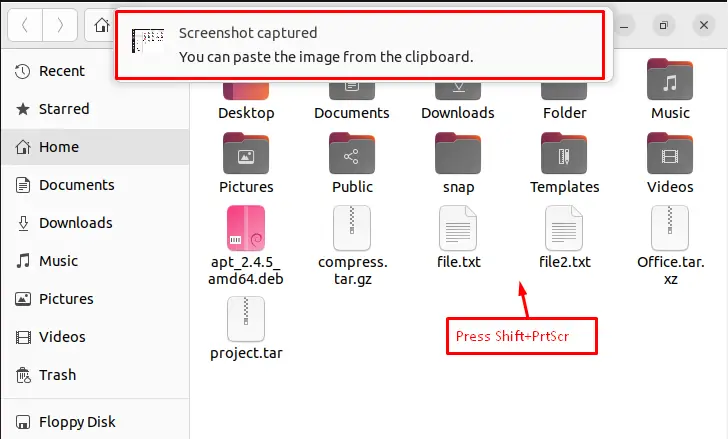
Using the “Alt+PrtScr” Key (Captures the Entire Screen)
An alternative way to capture the screenshot is possible through the “Alt+PrtScr” key. After pressing the key, the full screenshot is taken and stored in the “Pictures” folder:
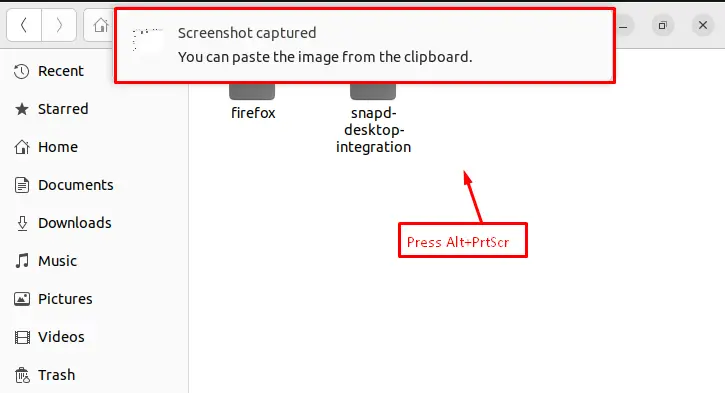
Let’s head over to another method.
Method 2: Using Third-Party Tools
In Linux, users can take screenshots by installing the “Flameshot” or “Kazam” (third-party) applications.
Flame shot:
To install the flame shot application, execute the below script in the terminal:
For Debian-based distributions.
$ sudo apt install flameshot
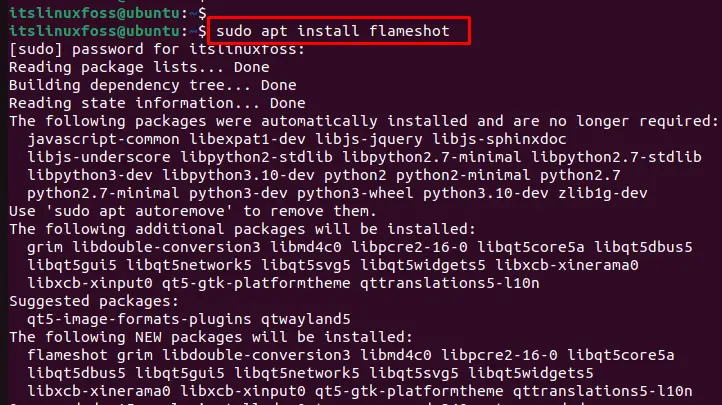
For Other Linux Systems.
$ sudo dnf install flameshot << For CentOS/Fedora >>
$ sudo pacman --sync flameshot << For Arch-based >>
Launch Flameshot
To launch the application, type “flamehsot” in the terminal that invokes a new window. In this application, hit the “Take new screenshot” button for capturing a picture:
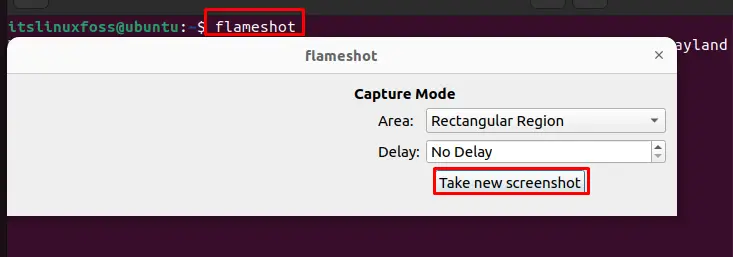
Kazam Application
To take a screenshot, the “Kazam” (third-party application) provides a wide range of assistance. To install this application, follow the below script:
For Debian-based distributions.
$ sudo apt install kazam
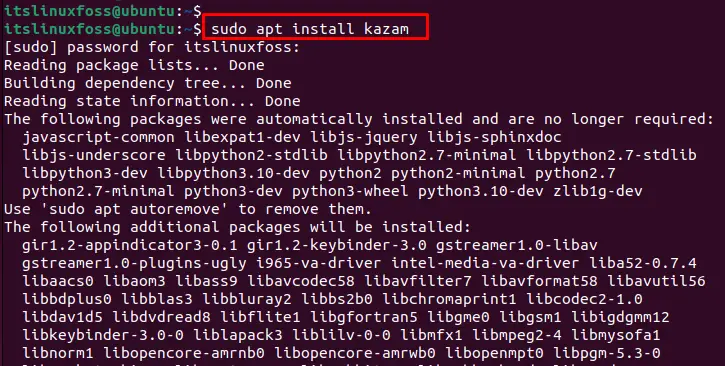
For Other Linux Systems.
$ sudo dnf -y install kazam << CentOS/Fedora >>
$ sudo pacman -Syu kazam << Arch Linux >>
Launch Kazam
To launch the “Kazam” application, type the “kazam” in the terminal that pops up the application to take a screenshot. Hit the “Capture” button to take a shot:
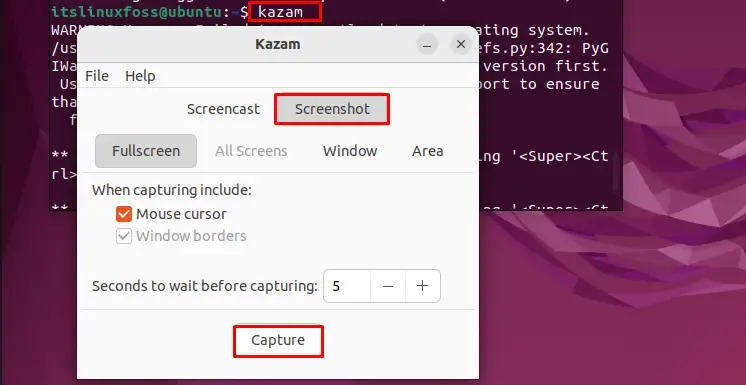
Additionally, users can manage the shortcut keys to invoke the application to take screenshots.
That is all from the guide for taking screenshots.
Conclusion
Linux offers a built-in screenshot tool that can be used through various shortcut keys, including “PrtScr”, “Alt+PrtScr”, and “Shift+PrtScr”. Moreover, various third-party tools (Flame shot and Kazam, etc.) can also be installed and used to take screenshots. This post has briefly discussed the tools and the ways to use those tools to take screenshots in Linux.
